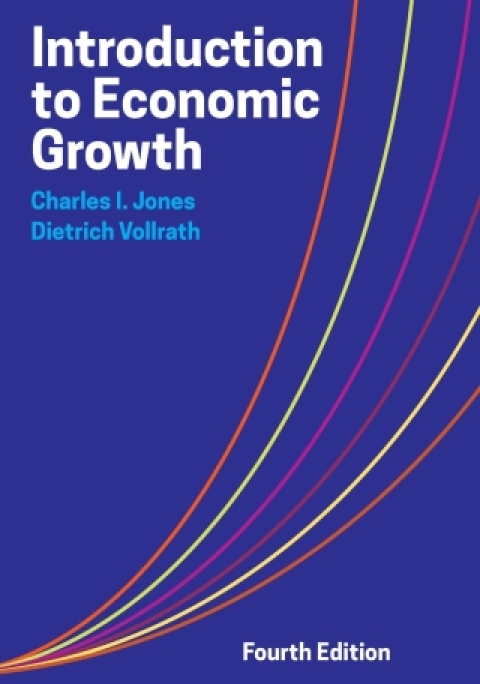Description
Efnisyfirlit
- Cover
- Publisher’s Notice
- Half Title
- Title Page
- Copyright
- Dedication
- Contents
- Preface
- Chapter 1: Introduction: The Facts of Economic Growth
- 1.1 The Data of Growth and Development
- 1.2 Other Stylized Facts about Growth
- 1.3 The Remainder of This Book
- Chapter 2: The Solow Model
- 2.1 Production and Distribution
- 2.2 Capital Accumulation
- 2.3 Comparative Statics and Transitional Growth
- 2.4 Consumption and the Golden Rule
- 2.5 Evaluating the Solow Model
- Exercises
- Chapter 3: Empirical Applications of the Solow Model
- 3.1 Case Studies of Transitional Growth
- 3.2 Cross-Country Differences in GDP per Capita
- 3.3 Convergence and Differences in Growth Rates
- 3.4 The World Distribution of Income
- 3.5 Growth Accounting
- Exercises
- Chapter 4: The Economics of Ideas
- 4.1 Productivity and Technology
- 4.2 Data on Ideas
- 4.3 Ideas and Imperfect Competition
- 4.4 Scale and Population
- 4.5 Summary
- Exercises
- Chapter 5: The Romer Model
- 5.1 The Basic Elements of the Romer Model
- 5.2 The Economics of Innovation in the Romer Model
- 5.3 Summary
- Exercises
- Chapter 6: Growth through Creative Destruction
- 6.1 The Basic Elements of the Schumpeterian Model
- 6.2 The Economics of Innovation in the Schumpeterian Model
- 6.3 Comparing the Romer and Schumpeterian Models
- 6.4 Competition and Innovation
- 6.5 Business Dynamism
- 6.6 Optimal R and D
- 6.7 Summary
- Exercises
- Chapter 7: Growth and Development
- 7.1 Development Accounting
- 7.2 Technology Adoption and Diffusion
- 7.3 Globalization and Development
- 7.4 Misallocation and Productivity
- 7.5 Understanding Differences in Growth Rates
- Exercises
- Chapter 8: Social Infrastructure and Long-Run Economic Performance
- 8.1 An Investment Problem
- 8.2 Empirical Evidence
- 8.3 The Choice of Social Infrastructure
- 8.4 Growth Miracles and Disasters
- 8.5 Summary
- Exercises
- Chapter 9: Population and the Origin of Sustained Growth
- 9.1 Population and Living Standards
- 9.2 The Malthusian Economy
- 9.3 Endogenous Technological Change
- 9.4 The Transition to Sustained Growth
- 9.5 The Economics of Population Growth
- 9.6 Comparative Development
- 9.7 Summary
- Exercises
- Chapter 10: Natural Resources and Economic Growth
- 10.1 Nonrenewable Resources
- 10.2 Prices and Scarcity
- 10.3 Explanations for a Declining Factor Share
- 10.4 Growth and the Environment
- 10.5 Summary
- Exercises
- Chapter 11: Alternative Theories of Endogenous Growth
- 11.1 Simple Endogenous Growth: The AK Model
- 11.2 Intuition and Other Growth Models
- 11.3 Externalities and the AK Model
- 11.4 Evaluating Endogenous Growth Models
- 11.5 What Is Endogenous Growth?
- Exercises
- Chapter 12: The Future of Growth
- 12.1 Historical versus Long-Run Growth
- 12.2 Demographic Changes
- 12.3 Automation
- 12.4 Summary
- Exercises
- Chapter 13: Understanding Economic Growth
- 13.1 Why Are Some Countries So Rich While Others Remain So Poor?
- 13.2 What Is the Engine of Economic Growth?
- 13.3 How Do We Understand Growth Miracles?
- 13.4 Conclusion
- Appendix A: Mathematical Review
- A.1 Derivatives and Integrals
- A.2 Properties of Logs
- A.3 Growth Rates and Logs
- A.4 Present Discounted Value
- A.5 Dynamics
- Appendix B: Additional Model Results
- B.1 The Traditional Solow Diagram
- B.2 An Exact Solution to the Solow Model
- B.3 An Exact Solution for the Romer Model
- B.4 Constant Elasticity of Substitution Production
- Appendix C: Additional Reading
- Bibliography
- Index





